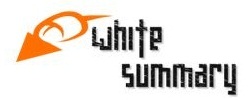The US tech literacy debate has been reignited by the publication of the results of this study, conducted on eighth graders. It shows that, on average, girls perform slightly better than boys on the national test that evaluates tech literacy. And while that may sound surprising to the layman, specialists know that the overall gulf in education between males and females is widening for a few decades now, in favor of the latter.
Maybe some thought of technology as the last male bastion education-wise, however changing cultural trends have made their presence felt in this field also. And that certainly has been expected for quite some time. In this post, we will discuss tech literacy from its definition, factors that establish that one belongs to this group and feast our eyes on some statistical data.
What Is Tech Literacy?
The technical definition sounds like this:
“Technology literacy is the ability of an individual, working independently and with others, to responsibly, appropriately and effectively use technology tools to access, manage, integrate, evaluate, create and communicate information” – Technology Literacy Assessment Project
One can see that it is not overly complicated. It is the simple process of having a basic understanding of modern technology, and integrating it into the everyday life of the individual, so it makes his/her life easier and gives them the ability to properly interact with the modern social environment.
The 8th-Grade Tech Literacy Test
One may wonder what does a test that can spark such attention from the media and the society alike consist of. Well, it’s not as straightforward as you would expect from an eighth-grade test as it contains ten parameters:
- Common Software and Hardware Problems – kids are expected to be able to connect ordinary peripheral devices or identify the causes of non-responsive programs, including browsers.
- Ability to Assimilate Change – periodically keeping themselves up to date with the latest changes through various media outlets. Successfully realizing the differences between knowledge and raw data.
- Consequences of Behavior – understanding the role of ethical boundaries in relation to informational technology, understanding the concept of copyright, realizing the consequences of spamming, hacking or consumer fraud.
- Common Software Use – students should be able to use ordinary tools: thesaurus, spell-checkers, and elementary spreadsheet software.
- Applying Software Tools in Assignments through the Curriculum.
- Communicating Educational Concepts in and outside the classroom environment.
- Using Collaborative Tools – approaching experts (through e-mail for example) or using software for team projects.
- Problem Solving – creating charts to represent data, incorporating multimedia elements in classroom presentations; choosing adequate tools for each type of assignment.
- Understanding of Technological Concepts – differences in file formats, content editing.
- Performing more Advanced Procedures – conducting Boolean searches for more nuanced information, understanding the concept of cultural bias in the selection of information, verifying information from diverse and trustworthy sources.
Elementary Traits of a Tech Literate Person
From the point of view of the specialists, tech literacy is the responsibility of the schooling system. Thus, a technology literate person may be evaluated in the same way as the middle school or high school students are evaluated. Here are the basic traits of such a person, set forth by the Technology Literacy Assessment Project:
- Innovation and Creativity – using technological products and information for the development of their intellectual resources.
- Collaboration and Communication – using social media in order to engage in and further develop their team working skills.
- Research – gather information, evaluate its usefulness and use it.
- Critical Thinking – correctly assess the quality of research, manage their time accordingly, solve problems in a creative manner and make sound decisions based on the accumulated information.
- Digital Citizenship – understanding differences in societal and cultural entities, and engaging in an ethical
- Technology Operations – using the concepts they have assimilated in order to formulate actions and operations using those concepts.
A Bit of Statistics
If you are already beginning to think about whether you comply with the aforementioned criteria, then this article has fulfilled its mission. The technical language can be misleading because coming up with a set of concepts that can be applied to a multitude of different individuals render language helpless. Nevertheless, in order to understand the magnitude that tech literacy research has taken, here are some interesting statistical facts (figures are available for 2015):
- Less than 50 % of lower income households (< $25,000 per year) have an Internet connection.
- Native English-speaking households are twice more likely to have an Internet connection than those who use English as a second language.
- Almost 20 % of students under the age of 16 have been victims of identity theft attempts or have had their identity stolen.
- 75 % of children between the ages of 5 and 15 have access at home to a tablet.
- 5 % of 15 and 16-year olds want to become engineers.
- Two-thirds of primary schools have frequent problems in implementing and maintaining an operable Wi-Fi.
As this is a site for the tech-savvy, we hope that it was already known that tech literacy was a big deal. And it will be an even bigger deal in the future.
 White summary Magazine
White summary Magazine






